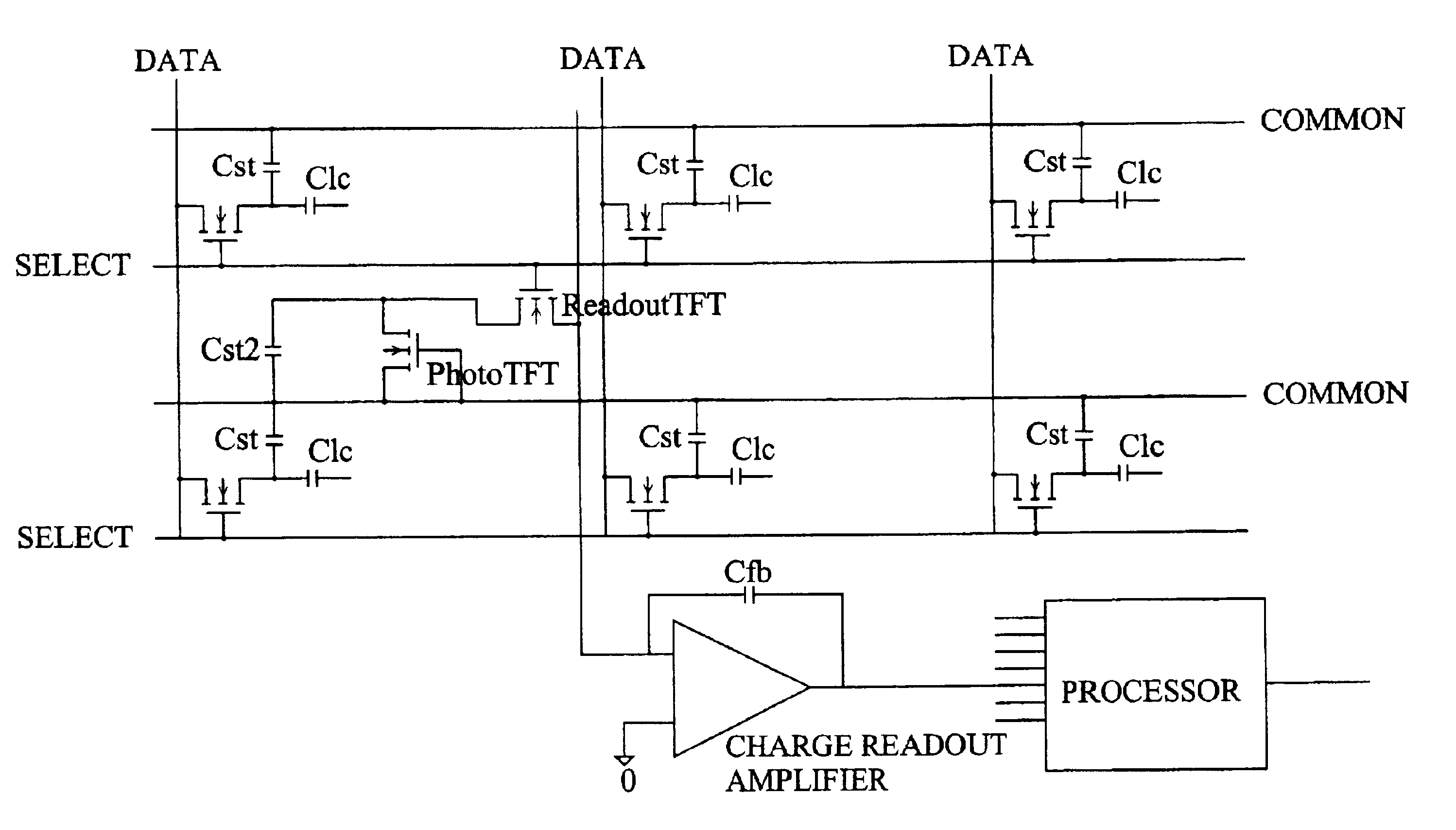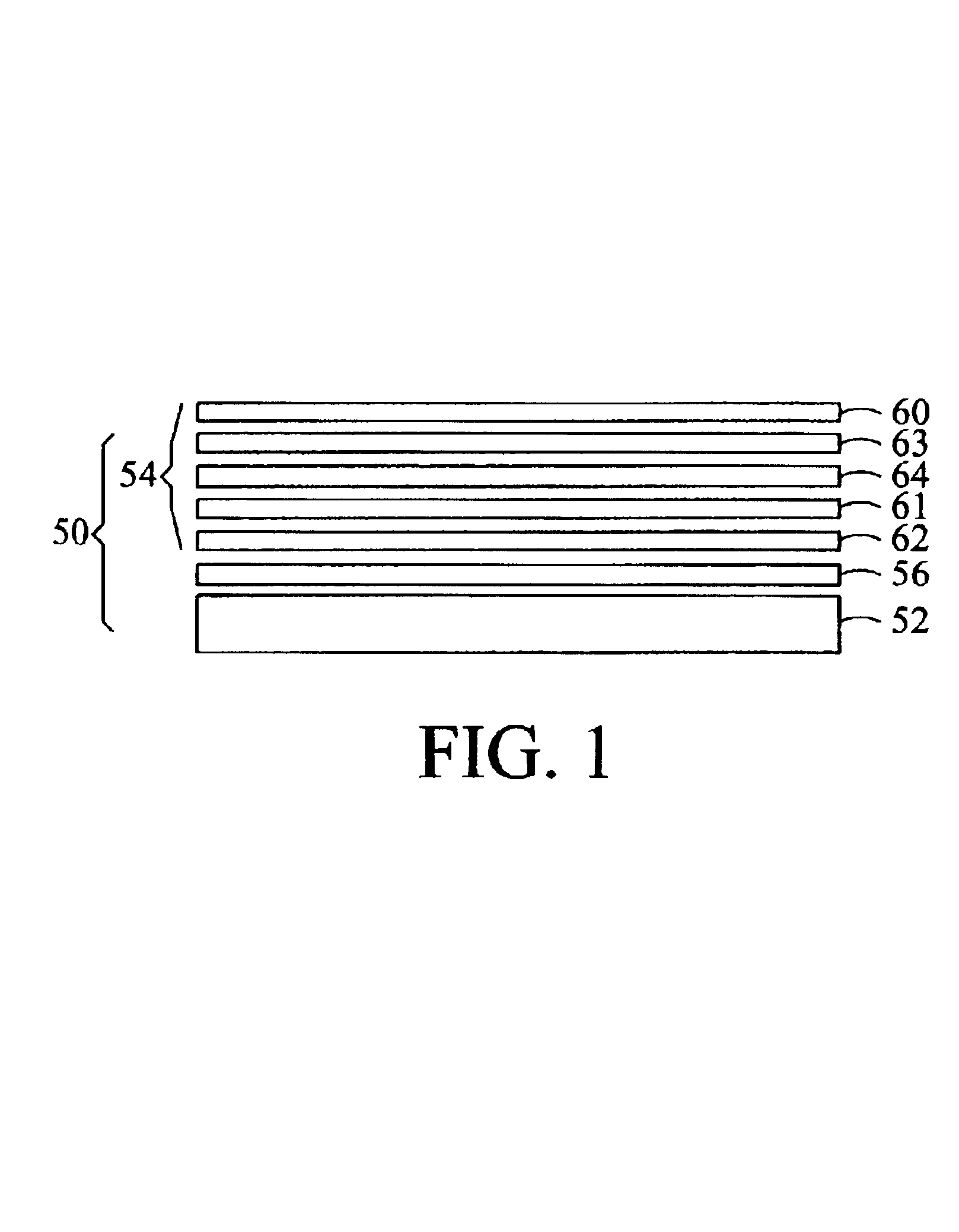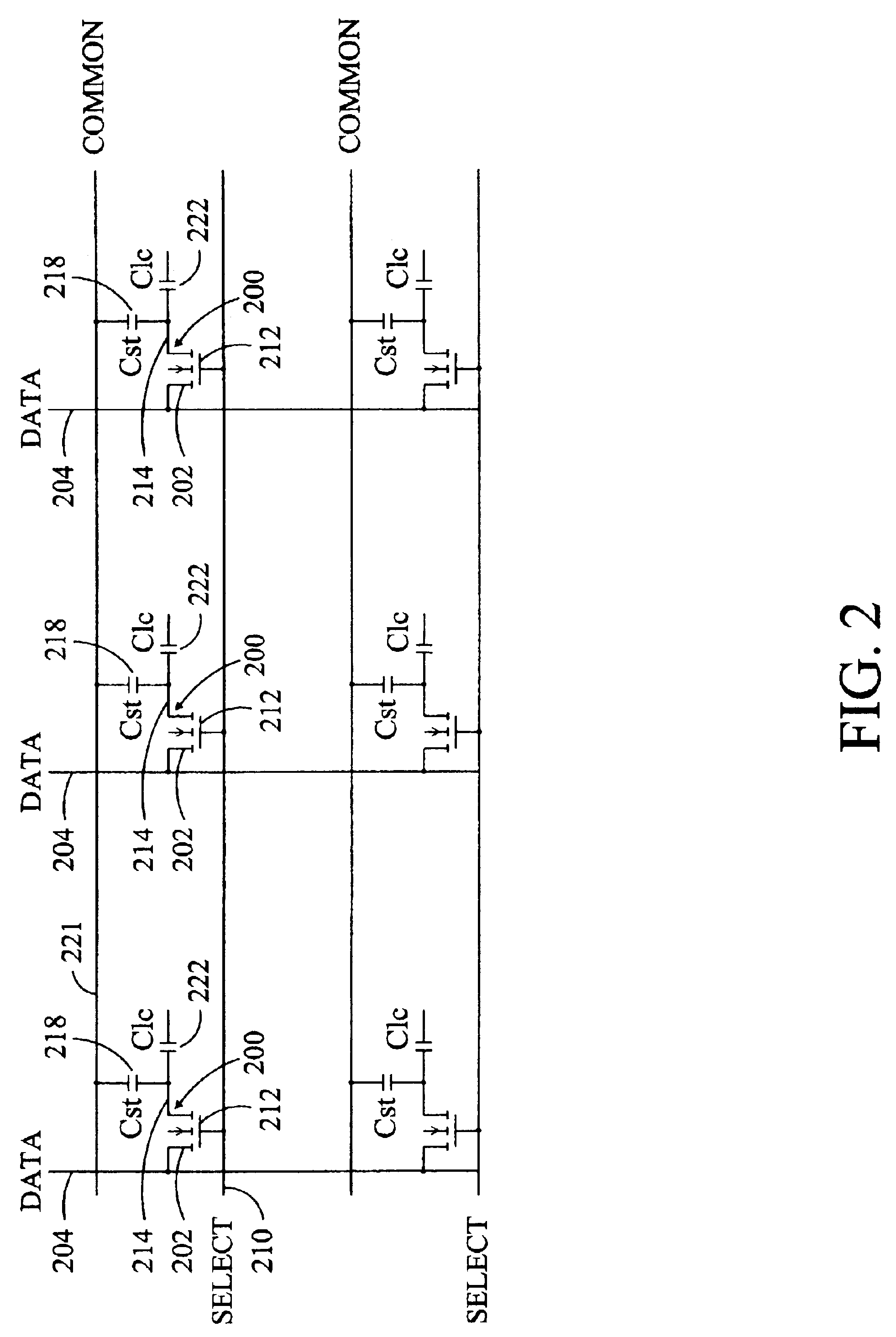Light sensitive display which senses decreases in light
- Summary
- Abstract
- Description
- Claims
- Application Information
AI Technical Summary
Problems solved by technology
Method used
Image
Examples
Embodiment Construction
[0021]Referring to FIG. 1, a liquid crystal display (LCD) 50 (indicated by a bracket) comprises generally, a backlight 52 and a light valve 54 (indicated by a bracket). Since liquid crystals do not emit light, most LCD panels are backlit with flourescent tubes or arrays of light-emitting diodes (LEDs) that are built into the sides or back of the panel. To disperse the light and obtain a more uniform intensity over the surface of the display, light from the backlight 52 typically passes through a diffuser 56 before impinging on the light valve 54.
[0022]The transmittance of light from the backlight 52 to the eye of a viewer 58, observing an image displayed on the front of the panel, is controlled by the light valve 54. The light valve 54 normally includes a pair of polarizers 60 and 62 separated by a layer of liquid crystals 64 contained in a cell gap between the polarizers. Light from the backlight 52 impinging on the first polarizer 62 comprises electromagnetic waves vibrating in a ...
PUM
 Login to View More
Login to View More Abstract
Description
Claims
Application Information
 Login to View More
Login to View More - R&D
- Intellectual Property
- Life Sciences
- Materials
- Tech Scout
- Unparalleled Data Quality
- Higher Quality Content
- 60% Fewer Hallucinations
Browse by: Latest US Patents, China's latest patents, Technical Efficacy Thesaurus, Application Domain, Technology Topic, Popular Technical Reports.
© 2025 PatSnap. All rights reserved.Legal|Privacy policy|Modern Slavery Act Transparency Statement|Sitemap|About US| Contact US: help@patsnap.com



